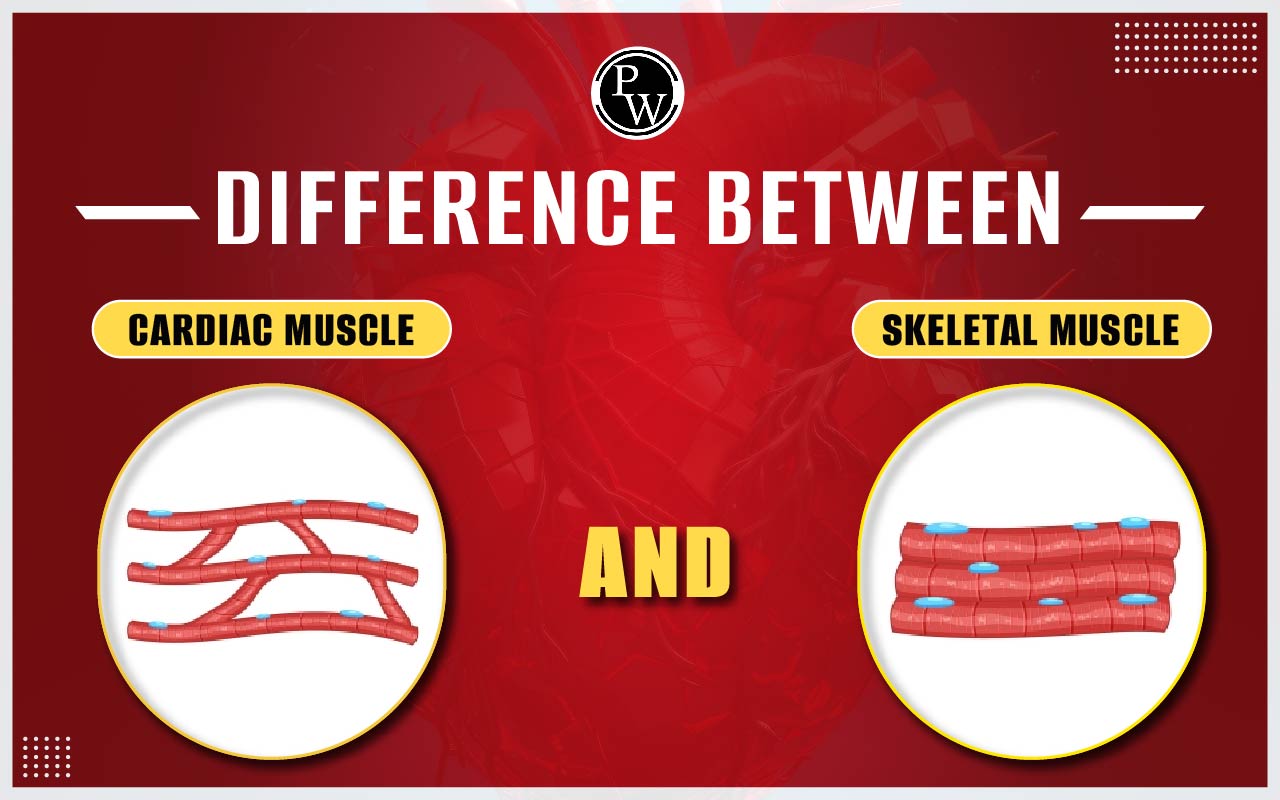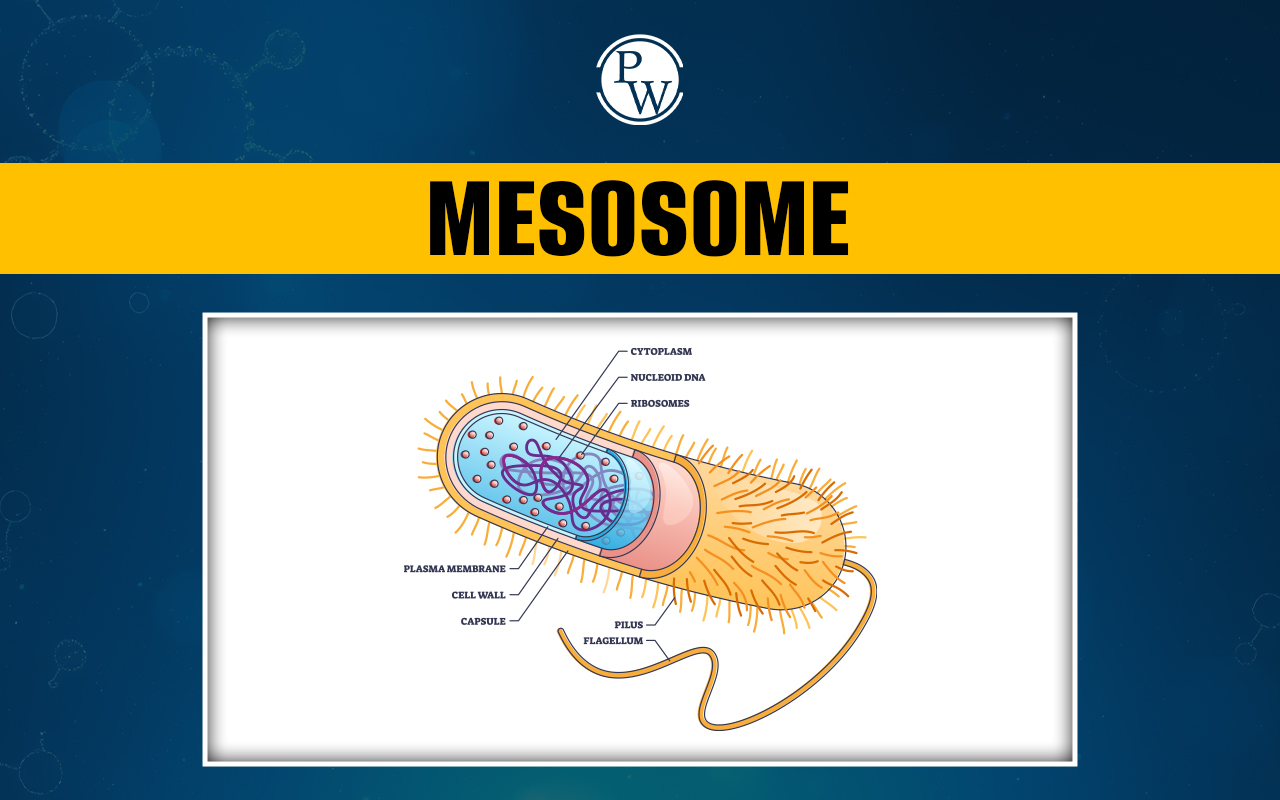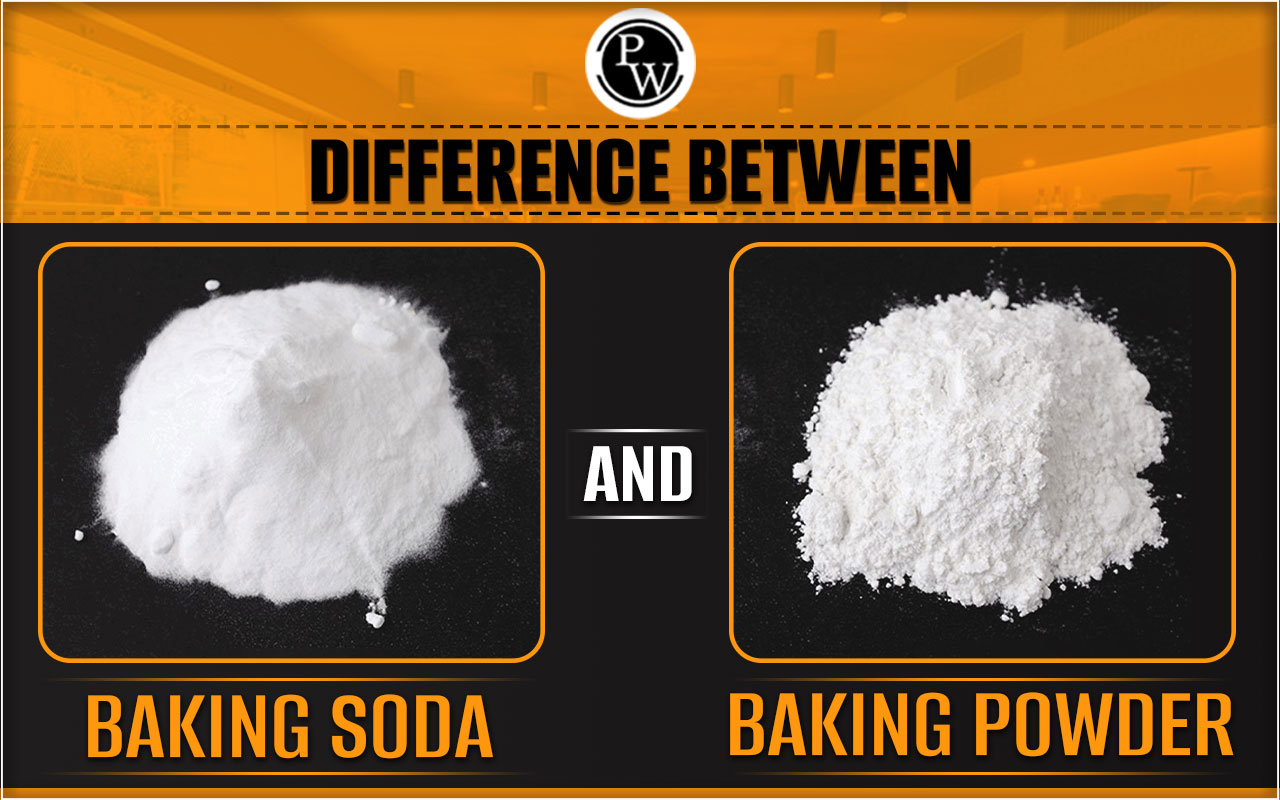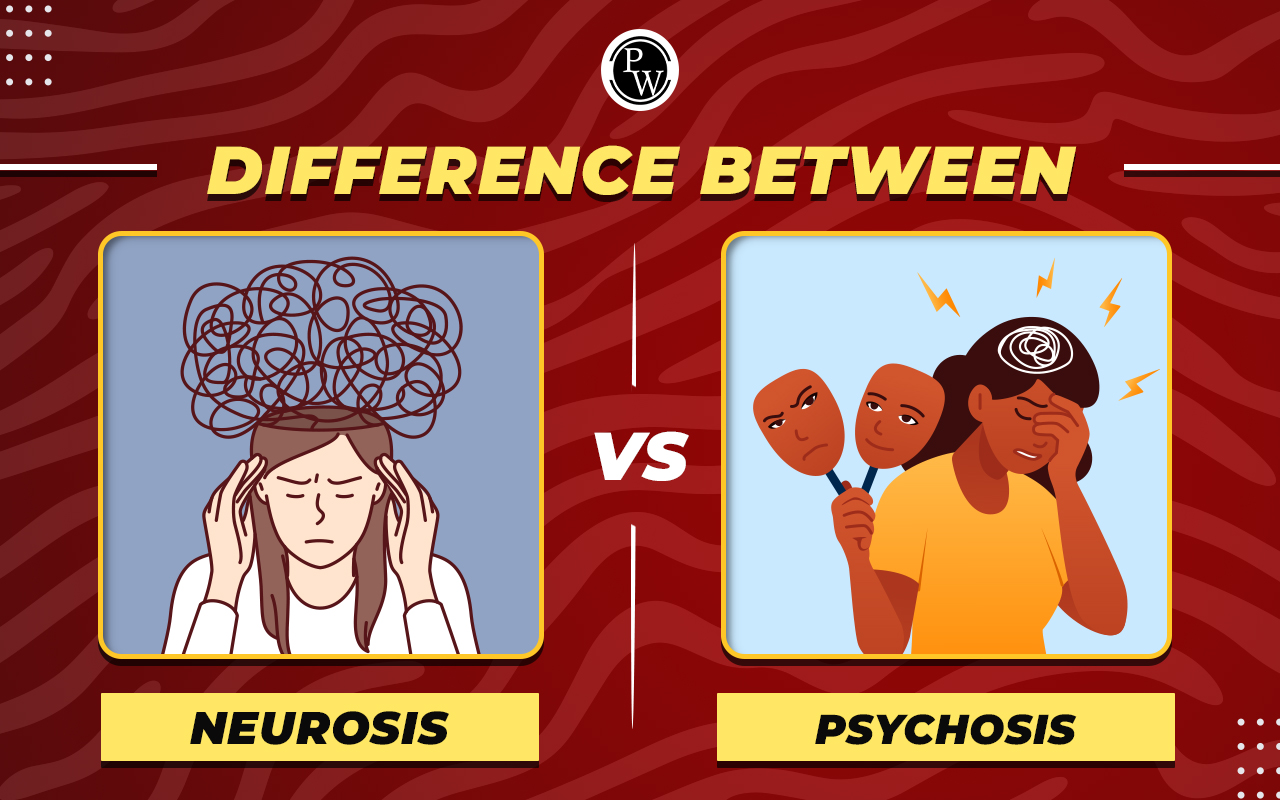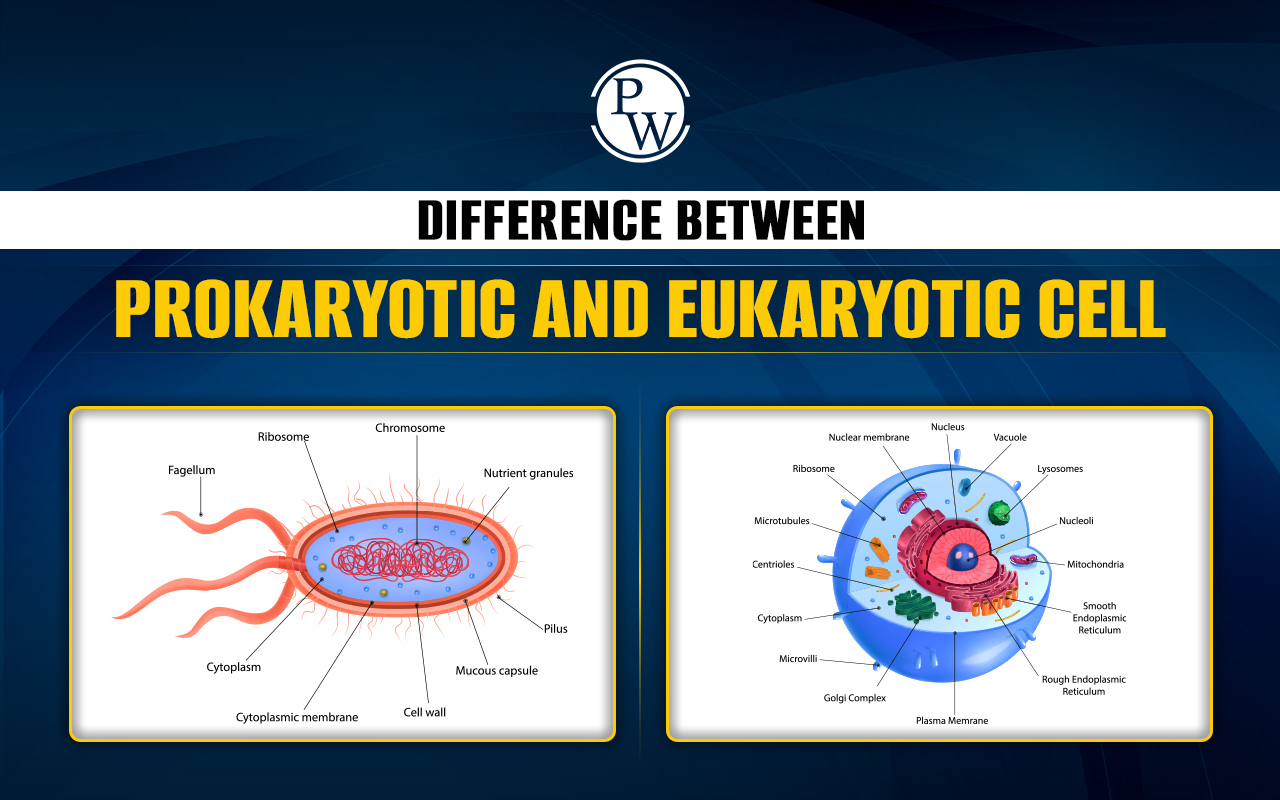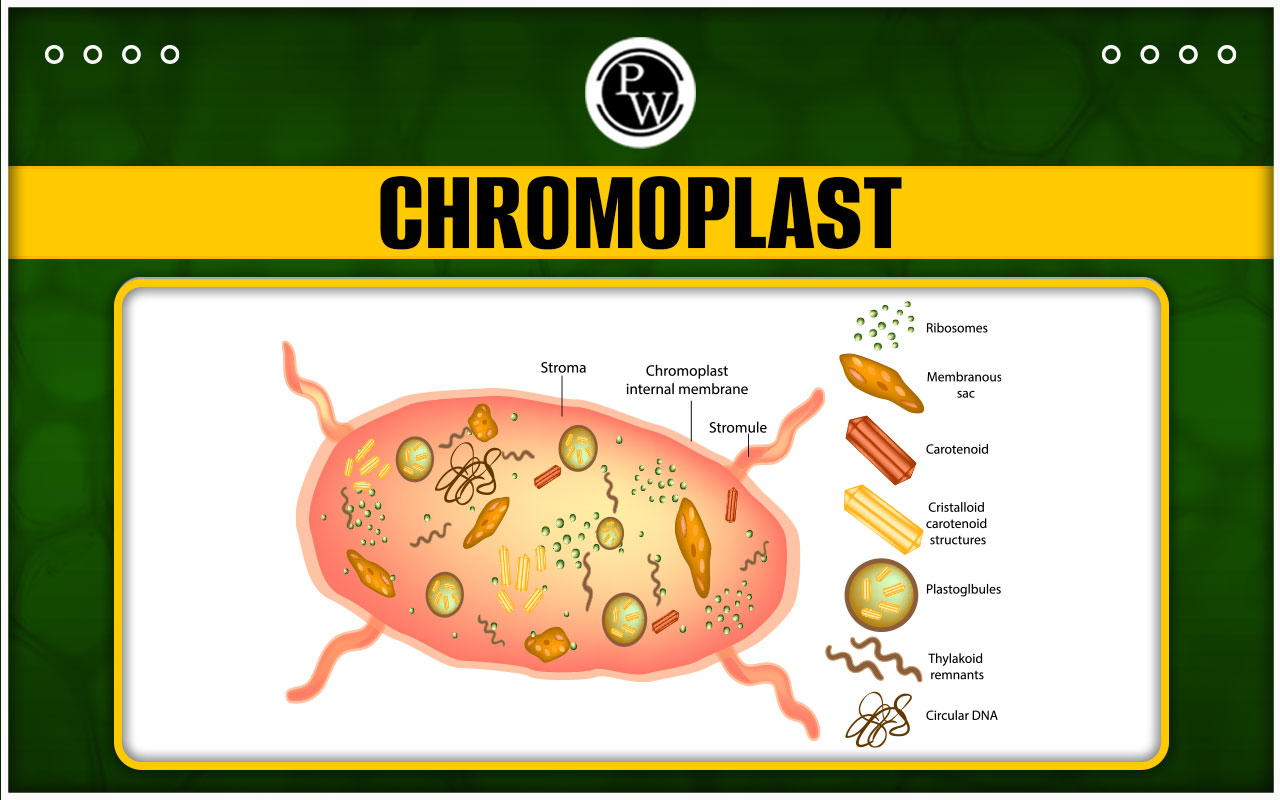
Chromoplast: Plant cells contain unique components known as plastids. These organelles, enclosed by a double membrane, are essential for producing and storing food in both algae and plant cells. All plastids originate from proplastids and mature into specific forms based on the cell’s function. Mature plastids can also transform from one type to another.
Plastids often contain various pigments, which can change the colour of the cells. One type of plastid, known as chromoplasts, lacks chlorophyll and is found in fruits, flowers, and aging leaves, giving them their distinct colours. More detailed information on chromoplasts can be found in the NEET Biology Notes provided in the article below.Chromoplast Meaning
Chromoplasts are specialized structures in plants that give vibrant colours to fruits, flowers, and some roots. Unlike chloroplasts, which have chlorophyll for photosynthesis, chromoplasts contain carotenoids, which are yellow, orange, and red pigments. These pigments attract pollinators and help spread seeds. Chromoplasts can also form from chloroplasts, as seen when a green tomato turns red. These colorful organelles are vital for making plants appealing to animals, ensuring their survival and reproduction.Chromoplast Types
Chromoplasts are specialized plastids in plant cells that are responsible for providing color to various plant parts. The types of chromoplasts are as follows:1. Globular Chromoplasts: Globular chromoplasts contain lipoprotein particles known as plastoglobules, which carry carotenoid pigments. These chromoplasts are often located in the outer stroma of plant cells. Examples of globular chromoplasts can be found in the petals of citrus fruits, yellow bell peppers, and Ranunculus repens.
Sexual Reproduction in Flowering Plants
2. Membranous Chromoplasts: Membranous chromoplasts contain carotene pigments within approximately 20 concentric membranes. These chromoplasts are typically found in tulips, daffodils, and the petals of Citrus sinensis.3. Tubular Chromoplasts: Tubular chromoplasts have carotenoids located within lipoprotein tubules. These types of chromoplasts are found in roses, the floral cup (hypanthium), and the coloured fruits of bell peppers. 4. Crystalline Chromoplasts: Crystalline chromoplasts contain pure carotene in crystal form. The primary function of these chromoplasts is to store carotenoids. Examples of crystalline chromoplasts include saffron crocus and some fruits. It is important to note that chromoplasts are non-photosynthetic and do not contribute to food production in plants. Instead, they are responsible for the bright colors seen in fruits, flowers, and other plant parts.
| NEET Biology Notes | |||
|---|---|---|---|
| Embryo | Funaria | Selaginella | Malvaceae |
| Polyembryony | Apomixis | Pinus | Pollen Grains |
| Chara | Volvox | Endosperm | Equisetum |
Chromoplast Characteristics
Chromoplasts are specialized plastids found in various parts of plants. Let's examine their characteristics: 1. Origin and Structure:- Chromoplasts develop from chloroplasts, which are essential for photosynthesis.
- They possess a double-layered membrane and circular DNA.
- In some cases, chromoplasts also originate from leucoplasts, as observed in watermelon, papaya, carrot, and mango.
- Chromoplasts are strongly coloured due to the presence of carotenoid pigments.
- Unlike chloroplasts, chromoplasts do not contain chlorophyll.
- Carotenoids provide chromoplasts with their yellow, orange, and red colours.
- These plastids are located in flowers, fruits, leaves, and roots.
- Their primary function is to synthesize and store carotenoids, which are crucial for attracting pollinators and aiding in seed dispersal.
- The size and shape of chromoplasts vary depending on the plant species and the type of tissue.
| NEET Biology Notes | ||
|---|---|---|
| Plasma Membrane Structure | Pre-Fertilisation | Economic Importance of Algae |
| Slime moulds | hypotonic solution | Post fertilisation |
Chromoplast Functions
Chromoplasts are specialized plastids in plants that give vibrant colors to fruits, flowers, and some roots. They contain pigments called carotenoids, which absorb certain wavelengths of light and reflect others, resulting in the red, orange, yellow, and sometimes white colors seen in these plant parts. The main functions of chromoplasts are:- Color Production: Chromoplasts synthesize and store carotenoid pigments, providing the bright colors of fruits and flowers. These colors attract pollinators like bees, butterflies, and birds, which are essential for plant reproduction by transferring pollen between flowers for fertilization and seed development.
- Pollinator Attraction: The vivid colors produced by chromoplasts serve as visual signals for pollinators, guiding them to flowers where they can find nectar and pollen. As pollinators search for these food sources, they inadvertently transfer pollen between flowers, aiding in pollination.
- Seed Dispersal: The attractive colors of fruits produced by chromoplasts also draw seed-dispersing animals like birds and mammals. These animals eat the fruits and spread the seeds to new locations through their droppings, helping plants spread and grow in new areas.
- Antioxidant Properties: Carotenoids possess antioxidant properties that protect plant cells from damage caused by free radicals.
- Vitamin A Precursors: Some carotenoids, such as beta-carotene found in carrots, are precursors to vitamin A, an essential nutrient for human health. When consumed, our bodies convert beta-carotene into vitamin A.
| NEET Biology Notes | |||
|---|---|---|---|
| Rhizopus | Fibrous root | Marchantia | Actinomycetes |
| Nostoc | Spirogyra | Ribosomes | Liverworts |
Chromoplast Examples
Chromoplasts are specialized plastids that contain pigments responsible for coloring plant tissues. These structures are commonly found in fruits, flowers, roots, and aging leaves, and they serve an important role in attracting pollinators and animals for seed dispersal. The following are some examples of chromoplasts:Tomato (Solanum lycopersicum): The tomato contains chromoplasts that produce the pigment lycopene, giving the fruit its distinctive red color. These red chromoplasts are primarily located in the fruit and serve the important function of attracting animals, which help disperse the seeds.
Carrot (Daucus carota): In carrots, chromoplasts produce the pigment carotene, resulting in their vibrant orange color. These chromoplasts are found in the root of the plant and serve to store nutrients. When the carrot root is exposed, the bright orange color can also attract animals.
Bell Pepper (Capsicum annuum): Bell peppers contain chromoplasts that generate pigments such as capsanthin and capsorubin, leading to a range of colors including red, yellow, and orange. These chromoplasts are located in the fruit and function to attract animals for seed dispersal.
Marigold (Tagetes spp.): Marigolds have chromoplasts that produce carotenoids, including lutein, which give the flowers their yellow and orange hues. These colorful chromoplasts are found in the flowers and play a role in attracting pollinators.
Sweet Potato (Ipomoea batatas): In sweet potatoes, chromoplasts produce carotenoids, resulting in yellow and orange colors in the root. These chromoplasts primarily function in nutrient storage, ensuring the plant's survival and growth. Paprika (Capsicum annuum): Paprika, derived from certain varieties of Capsicum annuum, contains chromoplasts that produce capsanthin and capsorubin pigments, giving the spice its red color. These chromoplasts are located in the fruit, which, when fresh, attract animals for seed dispersal and, when dried and ground, are used as a spice.
Pumpkin (Cucurbita pepo): The pumpkin's chromoplasts produce carotenoids, giving the fruit its orange color. These chromoplasts are found in the fruit and function to attract animals for seed dispersal, aiding in the propagation of the plant.
Petunia (Petunia spp.): Petunias have chromoplasts that produce anthocyanins, resulting in a variety of colors such as red, purple, and pink. These chromoplasts are located in the flowers and play a significant role in attracting pollinators, which are essential for the plant's reproduction.
Tomato (Solanum lycopersicum): The tomato contains chromoplasts that produce the pigment lycopene, giving the fruit its distinctive red color. These red chromoplasts are primarily located in the fruit and serve the important function of attracting animals, which help disperse the seeds.
- Carrot (Daucus carota ): In carrots, chromoplasts produce the pigment carotene, resulting in their vibrant orange color. These chromoplasts are found in the root of the plant and serve to store nutrients. When the carrot root is exposed, the bright orange color can also attract animals.
- Bell Pepper (Capsicum annuum) : Bell peppers contain chromoplasts that generate pigments such as capsanthin and capsorubin, leading to a range of colors including red, yellow, and orange. These chromoplasts are located in the fruit and function to attract animals for seed dispersal.
- Marigold (Tagetes spp.): Marigolds have chromoplasts that produce carotenoids, including lutein, which give the flowers their yellow and orange hues. These colorful chromoplasts are found in the flowers and play a role in attracting pollinators.
- Sweet Potato (Ipomoea batatas): In sweet potatoes, chromoplasts produce carotenoids, resulting in yellow and orange colors in the root. These chromoplasts primarily function in nutrient storage, ensuring the plant's survival and growth.
- Paprika (Capsicum annuum): Paprika, derived from certain varieties of Capsicum annuum, contains chromoplasts that produce capsanthin and capsorubin pigments, giving the spice its red color. These chromoplasts are located in the fruit, which, when fresh, attract animals for seed dispersal and, when dried and ground, are used as a spice.
- Pumpkin (Cucurbita pepo): The pumpkin's chromoplasts produce carotenoids, giving the fruit its orange color. These chromoplasts are found in the fruit and function to attract animals for seed dispersal, aiding in the propagation of the plant.
- Petunia (Petunia spp.): Petunias have chromoplasts that produce anthocyanins, resulting in a variety of colors such as red, purple, and pink. These chromoplasts are located in the flowers and play a significant role in attracting pollinators, which are essential for the plant's reproduction.
Difference Between Chloroplast, Chromoplast and Leucoplast
The following are the characteristics and functions of chromoplasts, chloroplasts, and leucoplasts in plants:| Difference Between Chloroplast, Chromoplast and Leucoplast | |||
|---|---|---|---|
| Feature | Chromoplasts | Chloroplasts | Leucoplasts |
| Color | Yellow or red | Green | Colorless |
| Pigments | Carotenoids and xanthophylls; lack chlorophyll | Chlorophyll and other carotenoids | None |
| Function | Provide distinct color to plant parts; role in pollination and seed dispersal | Perform photosynthesis | Store starch, fats, and proteins |
| Lamellar System | Absent; only remnants of thylakoids present | Present, with ribosomes and thylakoids | Several nucleoids and uniform granular stroma |
| NEET Exam Important Links | |
|---|---|
| NEET Syllabus | NEET Biology Diagrams |
| NEET Biology MCQ | NEET Biology Chapter wise Weightage |
| NEET Biology Notes | NEET Previous Year Question papers |
Chromoplast FAQs
Q 1. What is a chromoplast and its function?
Ans. Chromoplasts are colored plastids containing carotenoid pigments. These organelles can be ellipsoid, round, or needle-shaped. The primary function of chromoplasts is to impart color to various parts of plants, such as flower petals, fruits, and some roots. This coloring attracts insects for pollination.
Q 2. What is the difference between chromoplasts and chloroplasts?
Ans. Chloroplasts contain chlorophyll and carotenoid pigments and are responsible for photosynthesis, converting solar energy into chemical energy. Chromoplasts contain carotene and xanthophyll pigments, which give specific colors to flowers and fruits, aiding in pollination and seed dispersal.
Q 3. What is a chromoplast in a plant?
Ans. A chromoplast is an organelle within plant cells that contains pigments, which provide color to various parts of the plant. Unlike chloroplasts, chromoplasts do not play a role in photosynthesis.
Q 4. Where are chromoplasts found?
Ans. Chromoplasts are located in the petals of flowers and in fruits.
Q 5. Are chromoplasts colorless?
Ans. No, chromoplasts are not colorless. Leucoplasts are the only colorless plastids, primarily involved in storage. Chromoplasts are colored, while chloroplasts are green due to chlorophyll.
🔥 Trending Blogs
Talk to a counsellorHave doubts? Our support team will be happy to assist you!

Check out these Related Articles
Free Learning Resources
PW Books
Notes (Class 10-12)
PW Study Materials
Notes (Class 6-9)
Ncert Solutions
Govt Exams
Class 6th to 12th Online Courses
Govt Job Exams Courses
UPSC Coaching
Defence Exam Coaching
Gate Exam Coaching
Other Exams
Know about Physics Wallah
Physics Wallah is an Indian edtech platform that provides accessible & comprehensive learning experiences to students from Class 6th to postgraduate level. We also provide extensive NCERT solutions, sample paper, NEET, JEE Mains, BITSAT previous year papers & more such resources to students. Physics Wallah also caters to over 3.5 million registered students and over 78 lakh+ Youtube subscribers with 4.8 rating on its app.
We Stand Out because
We provide students with intensive courses with India’s qualified & experienced faculties & mentors. PW strives to make the learning experience comprehensive and accessible for students of all sections of society. We believe in empowering every single student who couldn't dream of a good career in engineering and medical field earlier.
Our Key Focus Areas
Physics Wallah's main focus is to make the learning experience as economical as possible for all students. With our affordable courses like Lakshya, Udaan and Arjuna and many others, we have been able to provide a platform for lakhs of aspirants. From providing Chemistry, Maths, Physics formula to giving e-books of eminent authors like RD Sharma, RS Aggarwal and Lakhmir Singh, PW focuses on every single student's need for preparation.
What Makes Us Different
Physics Wallah strives to develop a comprehensive pedagogical structure for students, where they get a state-of-the-art learning experience with study material and resources. Apart from catering students preparing for JEE Mains and NEET, PW also provides study material for each state board like Uttar Pradesh, Bihar, and others
Copyright © 2025 Physicswallah Limited All rights reserved.


